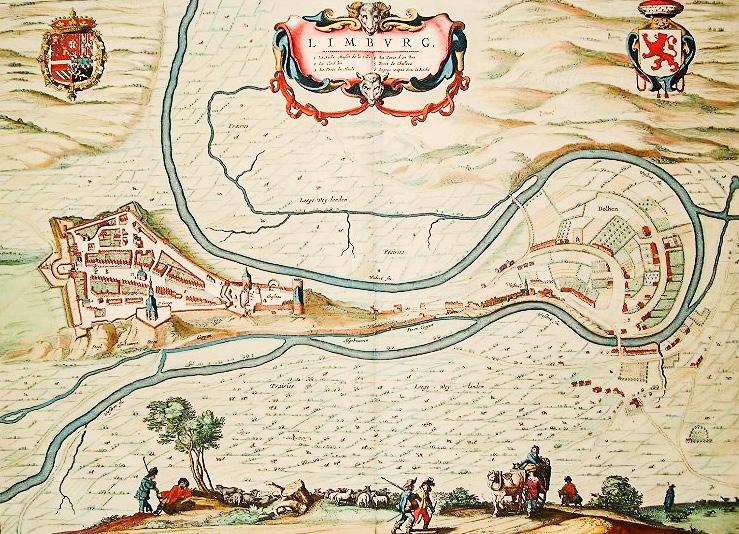
1 minute read
History
The Duchy of Limburg or Limbourg was an imperial estate of the Holy Roman Empire. Its chief town was Limbourg-sur-Vesdre, is today located within the Belgian province of Liège, with a small part in the neighbouring province of Belgian Limburg.
The Duchy evolved from a county which was first assembled under the lordship of a junior member of the House of Ardenne-Luxembourg, Frederick. He and his successors built and apparently named the fortified town which the county, and later the Duchy, were named after.
Advertisement

The extinction of the line of Frederick’s grandson Henry in 1283 sparked the War of the Limburg Succession, where after Limburg was ruled by the Dukes of Brabant in personal union, eventually being grouped together with the Brabantian “Overmaas” territories bordering it (including Dalhem, Valkenburg, and Hertogenrade), to be one of the Seventeen Provinces of the Burgundian Netherlands.
Unlike other parts of this province, the lands of the duchy stayed intact within the Southern Netherlands, under Habsburg control, after the divisions caused by the Eighty Years’ War and the War of the Spanish Succession. However finally, after the failed Brabant Revolution in 1789, the duchy’s history was terminated with the occupation by French Revolutionary troops in 1793. These lands were reunited within modern Belgium only after World War I. The duchy was multilingual, being the place where Dutch, French, and German dialects border upon each other and coexist at their geographical extremes, both now and in medieval times. Its northern and eastern borders are the approximate boundaries of the modern state of Belgium with the Netherlands and Germany, at their “tripoint”. The eastern part, which includes Eupen, is the administrative capital and northernmost part of the modern Belgian German-speaking Ostkantonen.









